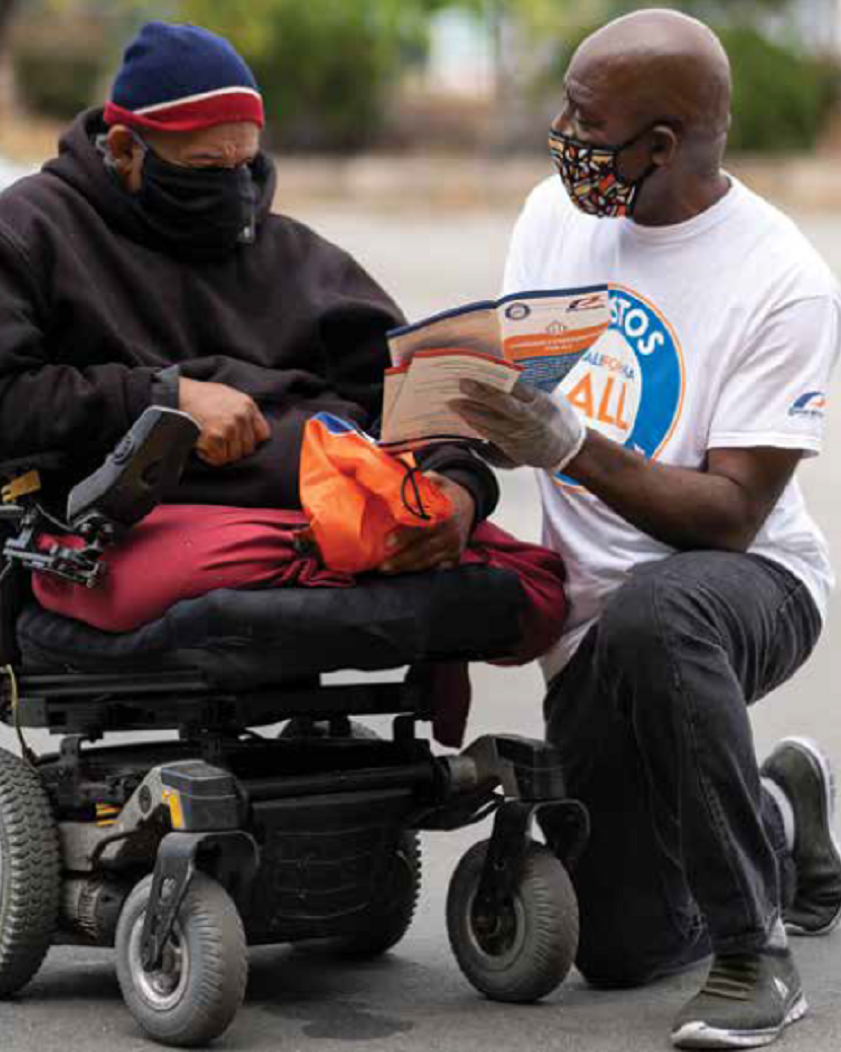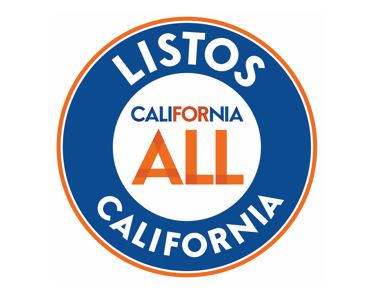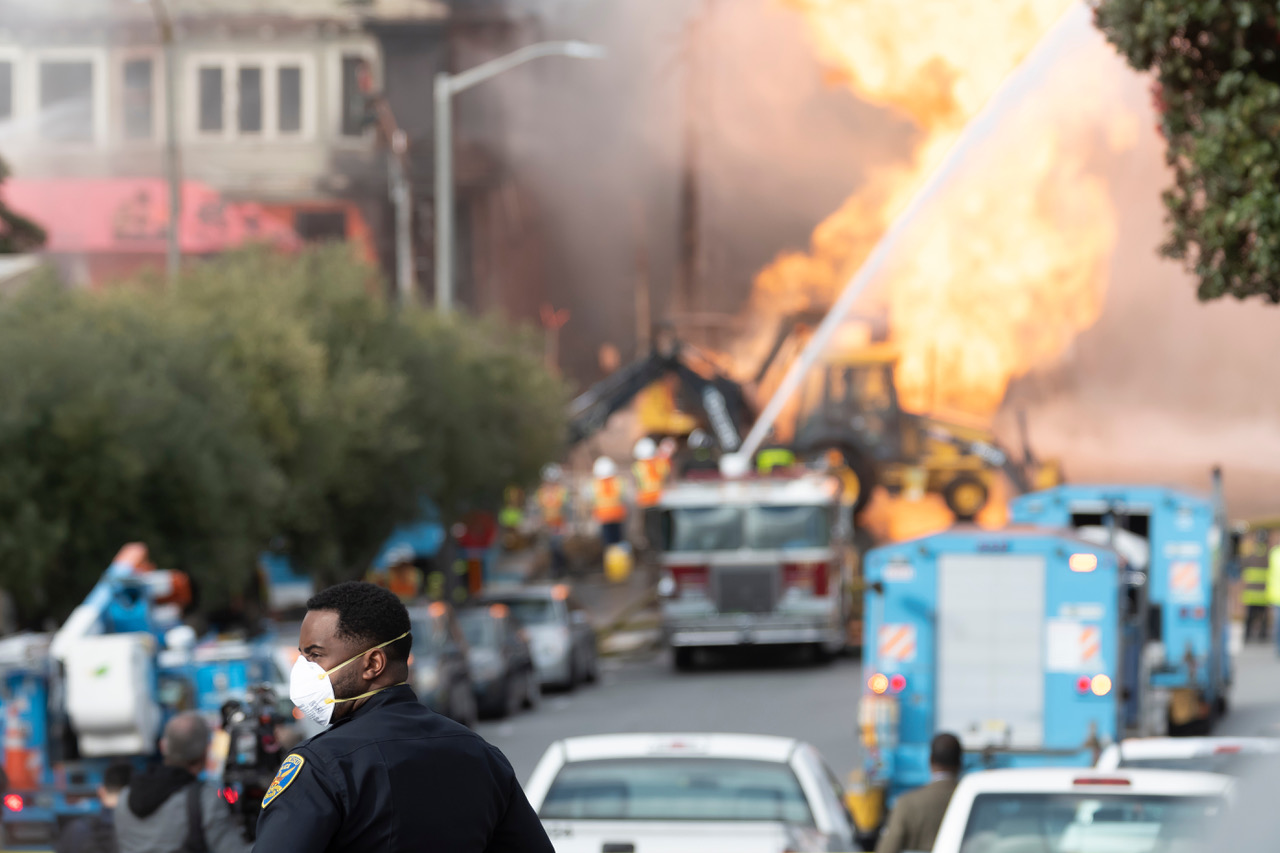
Press Release
To Increase Equity in Disaster Resilience, Unprecedented California Movement Detailed In New Report
-
Focus Areas
Disability Rights -
Issues
Climate Change, Wildfires & Extreme Heat -
Expertise
Health Education & Promotion -
Programs
Center on Disability at the Public Health Institute
Center on Disability at Public Health Institute Excelled in Equity Outreach
ALAMEDA COUNTY, CA – An inspiring and hopeful report on diverse ways to help the most vulnerable Californians to get ready for disasters is now available to the public through Listos California, the emergency preparedness campaign at the Governor’s Office of Emergency Services (Cal OES). The program was funded through a $50 million emergency allocation championed by Governor Gavin Newsom and state legislators.
From 2019 – 2021, Listos California reached 3.8 million people with low incomes, disabilities and language barriers, as well as older adults and other highly vulnerable Californians. Through the leadership of the Center on Disability at the Public Health Institute (PHI), more than 266,000 residents in Alameda County, 44,000 in El Dorado County and 29,000 in Nevada County learned simple steps to get ready for any disaster. These engagements were achieved during the historic 2020 pandemic and a wildfire season that saw drought, heat waves, lightning and windstorms drive thousands of residents from their homes and the SCU Complex Fire grow to become the third largest in modern California history.
“Emergency preparedness is not government’s responsibility alone. Solutions can’t be top-down – they have to come from the bottom-up,” said Governor Newsom. “We’re empowering non-profit organizations and emergency responders to work together to prepare for emergencies because California is at its best when we look out for each other.”
Alameda, El Dorado and Nevada Impact
One of the standout performers statewide was the Center on Disability at the Public Health Institute, under the leadership of Co-director Lewis Kraus. The renowned advocate took the reins in three counties – Alameda, El Dorado and Nevada – on behalf of people with disabilities, who are historically underserved when it comes to emergency preparedness. “We know they are the people most likely to die in these mass emergencies or disasters,” said Kraus. “The reason is that they either never got an emergency preparedness message, or the message provided was not taking into account their needs.”
Before the Listos California campaign fully launched, Kraus gathered best practices from across the nation on boosting the disaster resiliency of people with a wide variety of disabilities, and learned where many conventional preparedness campaigns fail them. He advised the state leaders on challenges faced by people who are deaf or hard of hearing, who read or speak with assistive devices and who face transportation barriers. He advocated that one-size-fits-all planning does not work for individuals with different strengths and circumstances. They need customized, personal strategies and systems.
PHI collaborated to build out a preparedness planning tool designed specifically for people with disabilities and older adults. It also created a webpage and a video promoting disaster readiness that links to readiness messages from mayors and supervisors. Kraus aimed to break through the common belief among some people with disabilities “that someone is going to come and save them,” he said, when in fact first responders are often overwhelmed by the number and scale of concurrent disasters and everyone needs to know how to save themselves.
PHI partnered with 30 organizations to broaden and deepen the campaign’s reach. In the spirit of Listos California, Kraus said “The only way it would work was for us to put community-based organizations in the driver’s seat.”
- The El Dorado Food Bank leveraged daily and weekly food bank distributions to reach high-needs populations with disaster readiness tools.
- The African French American New Church Covenant connected with people at the Ashby Flea Market in Berkeley, where Pastor Max Akpa coached a man using a wheelchair on his capacity to prepare for and respond to a disaster. “This is the first time someone comes to me and explains to me step-by-step what to do in case of an emergency,” the man replied.
- Placer Independent Resource Services did outreach to residents of El Dorado County with disabilities, promoting readiness steps that address the need to maintain health and independence if displaced during an evacuation.
- The Anti-Oppression Resource and Training Alliance facilitated a meeting with Alameda’s Office of Emergency Services to include consideration of caretakers of people with disabilities, and people experiencing homelessness, when planning for unhealthy air quality, Public Safety Power Shutoffs, lack of access to communication channels and other threats common to wildfires and other emergencies.
- To reach rural residents of Nevada County, PHI leveraged radio, online media and mail to deliver disaster readiness messages. A key partnership with the county’s Office of Emergency Services generated a county-wide mailing of PHI’s disaster preparedness information for people with disabilities.
- Another Nevada partner, Sierra Foothills Village, taught weekly webinars in evacuation planning to older adults who strive to live independently. In the summer of 2020, this made all the difference for one Nevada City woman and her cat. Just two weeks after she had packed Go Bags for herself and her pet, the Jones Fire hit the county and she was forced to evacuate. “While I was a bit scared, I had peace of mind of not wondering what I needed to take,” she recalled.
“We witnessed the strength of rural communities in the teamwork shown by PHI’s Nevada partners,” said Kraus. “Their ease of coordination, and their familiarity with each other, accelerated the achievement of their goal to reach 8,000 residents with disabilities, and enabled them to nearly double it, with more than 15,500 residents served.”
Listos California’s creative catalogue of ideas and innovations showcases ways to increase equity by deploying culturally and linguistically appropriate messages, messengers, and mediums. For a vivid summary of the spirit and ethos behind Listos California’s success, read the report brief, Innovations for Equity in Disaster Resilience (10 pages). For a comprehensive overview of the entire campaign’s achievements and a blueprint for replication, please review the Listos California Impact Report (287 pages).
“With drought promising another punishing fire season, now is the time to double down on efforts to increase equity in disaster resilience,” said Karen Baker, Architect and Chair of Listos California. “I encourage all Alameda and El Dorado County residents to go to listoscalifornia.org and learn the 5 easy steps for disaster readiness, before you smell smoke.”
- Get alerts to know what to do. (calalerts.org)
- Make a plan to protect your people.
- Pack a Go Bag with things you need.
- Build a Stay Box for when you can’t leave.
- Help friends and neighbors get ready.
An abundance of resources, in many languages and formats, is available under GET RESOURCES at listoscalifornia.org. All materials are public and may be freely shared with communities by media, organizations and individuals.
LISTOS CALIFORNIA (Listos means “ready” in Spanish)
Listos California is a groundbreaking emergency preparedness campaign helping the state’s most diverse and vulnerable populations prepare for disasters like wildfires, earthquakes, and floods, and for public health emergencies like the COVID-19 pandemic. Listos California, anchored at the Governor’s Office of Emergency Services, is directed by Chair Karen Baker. This campaign is based on an investment of public funds by Governor Gavin Newsom and state lawmakers. Visit ListosCalifornia.org.
#30
Work With Us
You change the world. We do the rest. Explore fiscal sponsorship at PHI.
Support Us
Together, we can accelerate our response to public health’s most critical issues.
Find Employment
Begin your career at the Public Health Institute.




